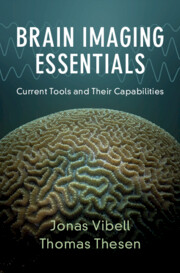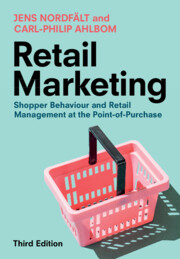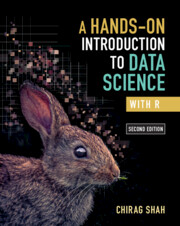Refine search
Actions for selected content:
37953 results in Cambridge Textbooks

Science of the Supernatural
- Critical Thinking for the Mind and Brain
- Coming soon
-
- Expected online publication date:
- March 2026
- Print publication:
- 31 March 2026
-
- Textbook
- Export citation
Materials Management
- Coming soon
-
- Expected online publication date:
- February 2026
- Print publication:
- 31 March 2026
-
- Textbook
- Export citation

Making Sense of Mass Education
- Coming soon
-
- Expected online publication date:
- February 2026
- Print publication:
- 28 February 2026
-
- Textbook
- Export citation

Brain Imaging Essentials
- Current Tools and Their Capabilities
- Coming soon
-
- Expected online publication date:
- February 2026
- Print publication:
- 28 February 2026
-
- Textbook
- Export citation

Strategic Compensation and Talent Management
- Lessons for Managers
- Coming soon
-
- Expected online publication date:
- February 2026
- Print publication:
- 28 February 2026
-
- Textbook
- Export citation

Formal Methods, Informally
- How to Write Programs That Work
- Coming soon
-
- Expected online publication date:
- February 2026
- Print publication:
- 31 January 2026
-
- Textbook
- Export citation

Retail Marketing
- Shopper Behaviour and Retail Management at the Point-of-Purchase
- Coming soon
-
- Expected online publication date:
- February 2026
- Print publication:
- 28 February 2026
-
- Textbook
- Export citation

Semantic Research
- From Data to Analysis
- Coming soon
-
- Expected online publication date:
- February 2026
- Print publication:
- 28 February 2026
-
- Textbook
- Export citation

Analytical Aircraft Flight
- Dynamics, Performance, Stability, and Control
- Coming soon
-
- Expected online publication date:
- February 2026
- Print publication:
- 29 January 2026
-
- Textbook
- Export citation

The Cambridge Introduction to the Old Testament
- Coming soon
-
- Expected online publication date:
- February 2026
- Print publication:
- 28 February 2026
-
- Textbook
- Export citation

Reading Biblical Greek
- A Graded Reader for Beginners
- Coming soon
-
- Expected online publication date:
- February 2026
- Print publication:
- 28 February 2026
-
- Textbook
- Export citation

Comparing Syntax
- An Introduction to Formal Language Typology
- Coming soon
-
- Expected online publication date:
- January 2026
- Print publication:
- 31 January 2026
-
- Textbook
- Export citation

Quantum Computing Unveiled
- A Concise Course with Topological Extensions
- Coming soon
-
- Expected online publication date:
- January 2026
- Print publication:
- 31 January 2026
-
- Textbook
- Export citation

Fundamentals of Biological Psychology
- A Critical Perspective
- Coming soon
-
- Expected online publication date:
- January 2026
- Print publication:
- 31 January 2026
-
- Textbook
- Export citation

The Evolution of Western Thought
- A New History, from Antiquity to the Early Modern Era
- Coming soon
-
- Expected online publication date:
- January 2026
- Print publication:
- 31 January 2026
-
- Textbook
- Export citation

A Hands-On Introduction to Data Science with Python
- Coming soon
-
- Expected online publication date:
- January 2026
- Print publication:
- 22 January 2026
-
- Textbook
- Export citation

A Hands-On Introduction to Data Science with R
- Coming soon
-
- Expected online publication date:
- January 2026
- Print publication:
- 22 January 2026
-
- Textbook
- Export citation
An Introduction to Public International Law
- Coming soon
-
- Expected online publication date:
- January 2026
- Print publication:
- 28 February 2026
-
- Textbook
- Export citation
Part III - Peace and War
-
- Book:
- Politics and International Law
- Published online:
- 23 December 2025
- Print publication:
- 22 January 2026, pp 251-380
-
- Chapter
- Export citation
7 - Investment
- from Part II - Property Rights and Economic Exchange
-
- Book:
- Politics and International Law
- Published online:
- 23 December 2025
- Print publication:
- 22 January 2026, pp 223-250
-
- Chapter
- Export citation
